6 Best Steak Cuts To Buy And 6 Steaks To Avoid, According To A Chef
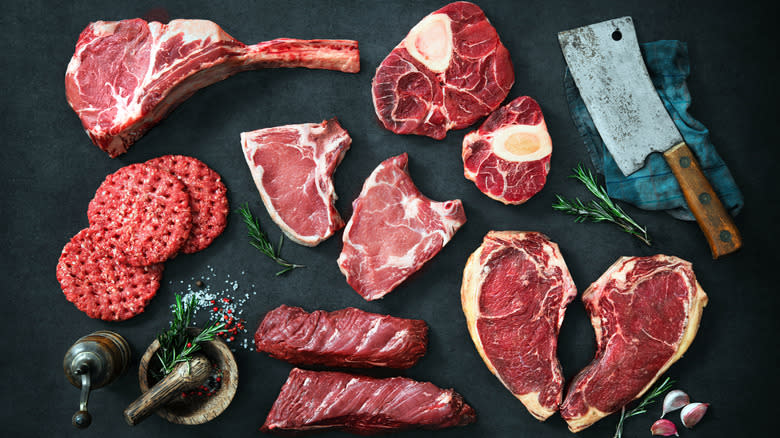
Having worked the grill and griddle on the line in multiple professional kitchens, I've been tasked with cooking everything from chicken marsala and juicy patty melts to fajitas and various cuts of steak. At one point, I spent every day seasoning and grilling dozens of steaks that would get thinly sliced and then drizzled with homemade chimichurri for the hungry masses. That may sound demanding, but the truth is that grilling is one of my favorite parts about working in a kitchen, and I always find something extra satisfying about cooking steak.
People often ask me what steak cuts I would recommend. My first response is to ask what type of dish they'd like to prepare. Are we talking about making stir-fry, cheesesteak, or tacos? Sure, we could find a cut that would work for all three of those dishes, but we can also select more affordable pieces of steak that will still match the taste and texture we're aiming for.
The bottom line is that the best cut of steak to use largely depends on the budget and overall game plan for the meal. In most cases, I've found that people really just want to grill up a classic steak dinner, or know which cuts are the most versatile. The reality is that there are often several steak cuts that can fit the bill. On the other hand, there are also other cuts that are probably best avoided — unless they're being used for a very specific purpose.
Read more: The 13 Best Steaks For Grilling
Buy: Ribeye
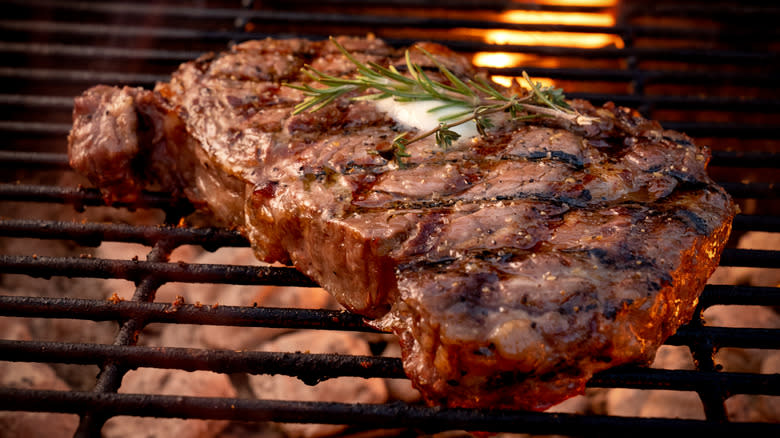
Overall, ribeye is one of the best cuts of steak that money can buy. Ribeye is well-marbled, which imparts every slice of it with a luxurious tenderness that's just about guaranteed to be exceptionally juicy and flavorful. Due to its higher fat content, ribeye's succulence is highly prized — which also tends to make it a little pricier than leaner cuts like sirloin. At the same time, ribeye is typically more affordable than filet mignon.
The beauty of ribeye is that it can be cooked in a variety of ways to make endless dishes from all types of cuisines. A ribeye can be cubed, marinated, and speared into shish kebabs, basted in butter and sizzled in a searing hot cast iron pan, shaved thin and used in sandwiches, or simply thrown directly on the grill with just a little salt and pepper. In all of these scenarios and more, ribeye rises to the occasion to deliver big flavors with relatively little coaxing.
Avoid: Round Steak
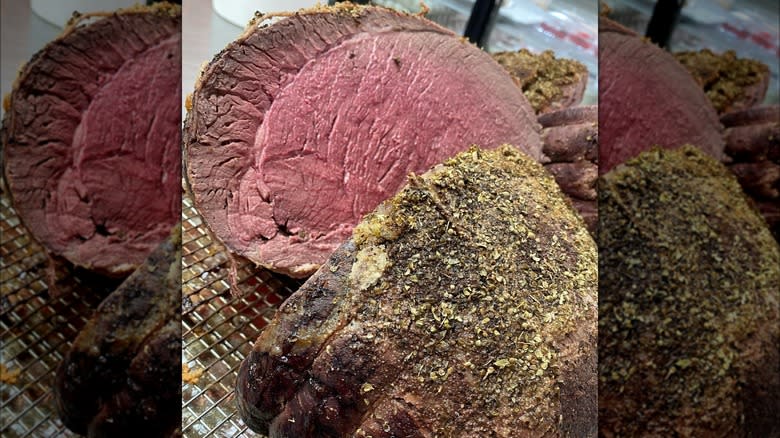
Top round beef is lean and tough. This cut comes from the hip area, near the hind legs of the cow. Because this section is highly active, the constant movement burns most of the fat and makes the beef here less tender.
This is not the kind of steak cut that you can cook quickly. If you were to simply season this and throw it on the grill or in a hot cast iron pan, the end result would be a leathery slab of beef that's a chore to chew. For this reason, round steak is probably a cut that you want to avoid if you're looking for a more traditional steak dinner that can be cooked with minimal preparation.
There is an exception here, though: Round is most often used to make roast beef, so it's a solid option if you want to make a big batch of open-faced roast beef sandwiches. The downside here is that round needs to be baked in the oven for a couple of hours, depending on its weight, so working with this cut tends to be more time-consuming.
Buy: T-Bone
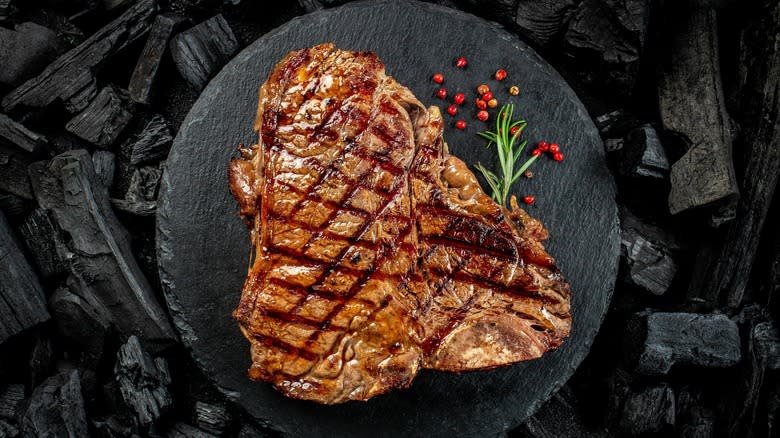
A T-bone essentially offers two different steaks in a single cut of beef. T-bones are cut from the short loin, which holds some exceptionally tender meat. Portions from this section can be trimmed into separate smaller steaks, but they can also be left whole, with each side of beef separated by a bone shaped like the letter T — hence the name "T-bone." Within the T-bone is a strip steak and a filet mignon.
The beauty of eating a T-bone steak is getting the best of both worlds. The filet mignon is all about texture: It's ultra soft and practically melts in the mouth with its delicateness. Then there's the strip steak, which is a little firmer than the filet mignon but makes up for it with a richer flavor. All in all, there's no doubt that T-bone steaks are one of the best cuts that you can score.
Avoid: Cube Steak
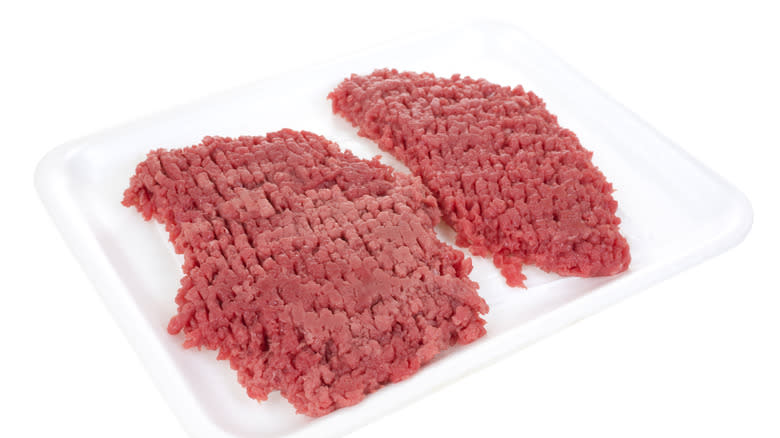
Cube steak can be a tempting purchase since it has such a cheap price tag. At first glance, you might even mistake cube steak for ground beef, since the surface of the meat has a chopped appearance from being mechanically pounded and tenderized. Upon further inspection, you'll see that unlike ground beef, cube steak is still in filet form. The reason cube steak is mechanically tenderized before it's packaged for sale is because it contains very little marbling.
Because of its lack of fat, cube steak isn't particularly succulent or flavorful. This is not the kind of cut that you'd throw on the grill. Instead, the best way to utilize this cut is to turn it into country-fried steak (also known as chicken-fried steak) that's smothered in gravy to add some much-needed fat. Traditionally, country fried steak is served smothered with a creamy white gravy, while chicken-fried steak is served with brown gravy — though both gravies are often used interchangeably. Because the surface of cube steak comes with a lot of punctures from the tenderizing process, the gravy is able to pool into those little crevasses, easily clinging to the breading of the steak. In short: Only buy this cut if you plan on taking the time to make country-fried steak. Otherwise, cube steak will probably end up disappointing you.
Buy: Sirloin
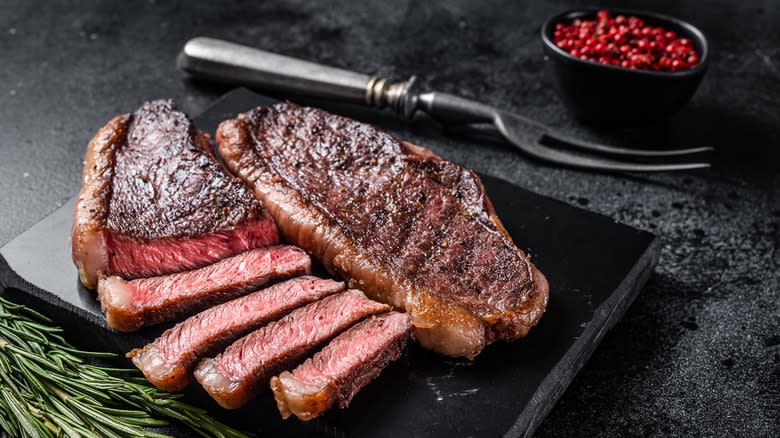
Sirloin comes from a primal cut that includes top sirloin, bottom sirloin, tri-tip, and sirloin bavette. Many people are familiar with top sirloin, since it's commonly found in restaurants and in butcher's cases or the meat sections at grocery stores. Sirloin is one of the most versatile cuts of steak available and will work with everything from steak salads and sandwiches to stir-fry recipes, grilling, or sous vide.
Though it may not be quite as tender as filet mignon or ribeye, sirloin can easily be sliced thin enough to match the tenderness of more expensive cuts. The ability of sirloin to deliver rich flavors and be seamlessly used in a wide variety of recipes makes it one of the top steak cuts that you can buy. The marbling on sirloin isn't nearly as extensive as more luxurious cuts, but its slightly lower price tag is worth every penny without sacrificing much quality.
Avoid: Oxtail
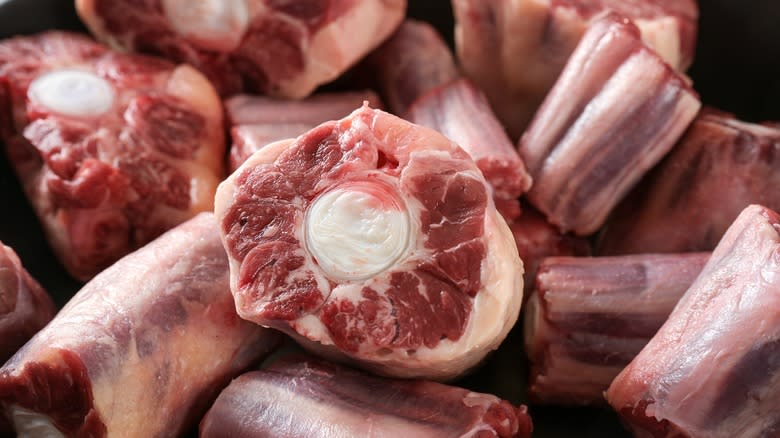
The reason oxtail has landed in the "avoid" category here has nothing to do with its taste and texture, which can be truly spectacular. Because it is loaded with collagen, oxtail can make a velvety beef stew that's truly luxurious and delicious. The meat is also extremely high in fat (around 70%), so it's extremely tender. The major issue here for most home cooks is that cooking oxtail requires slow braising for hours to achieve the best results. Of course, if time is of no concern, then oxtail is a fine choice.
Another issue to consider here is the rising price of oxtail. Years ago, when oxtail was less trendy, it was possible to score it next to low-priced scraps for a good deal. But the popularity of oxtail has grown, and the price has risen by more than 50% since 2018, with no end in sight. If you want an affordable cut of beef that makes it possible to quickly prepare a high-protein meal, oxtail is not your best bet.
Buy: Porterhouse
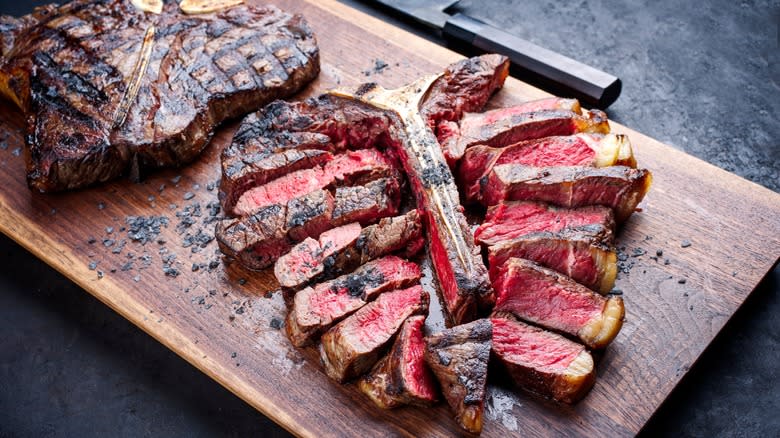
Looking at a T-bone and a porterhouse side by side, you might think that they're exactly the same cut. The bone that separates each side of the cut is identical, and the shape of the cuts on either side of the bone is the same. Yet if you look closer — or better yet, bust out the measuring tape — you'll notice a consistent difference between them. Despite T-bones and porterhouses coming from the same exact spot, porterhouses are thicker. According to USDA guidelines, in order for a steak cut to be classified as a porterhouse, it needs to be at least 1.25 inches thick. If the cut measures less than that, then it's called a T-bone.
What this means is that a porterhouse is just a thicker T-bone — which makes it slightly better than a T-bone in our book. Because the filet and the strip are a little thicker, porterhouses take a little more time to cook than a T-bone, but they're well worth the wait.
Avoid: Skirt Steak
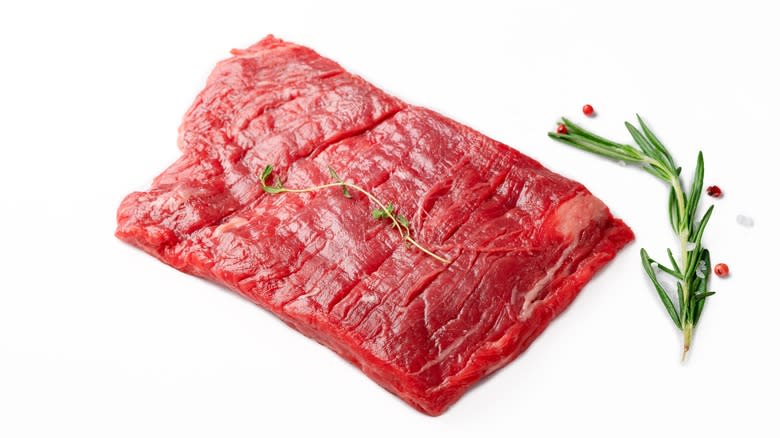
After steak is cooked, it's important to cut it against the grain. Cutting against the grain dissects and slices through the meat's connective fibers in a way that makes the steak much more tender. This is especially true with skirt steak. Cutting skirt steak the wrong way is guaranteed to turn each slice into a meaty rubber band, which isn't exactly appetizing.
Skirt steak is often marinated for long periods of time to help tenderize the meat, but the truth is that even when skirt steak is marinated and properly cut, it still has some level of inherent chewiness that I've never been particularly fond of. It should be noted here that there are two main types of skirt steak: outside skirt steak and the inside skirt steak. The outside skirt steak comes from the diaphragm and is longer and thicker, and ultimately much more tender. The inside skirt steak is smaller, thinner, and extremely fibrous and chewy. Skirt steak is often confused for flank steak, but there is a difference between them — more on that in a bit.
Buy: Filet Mignon
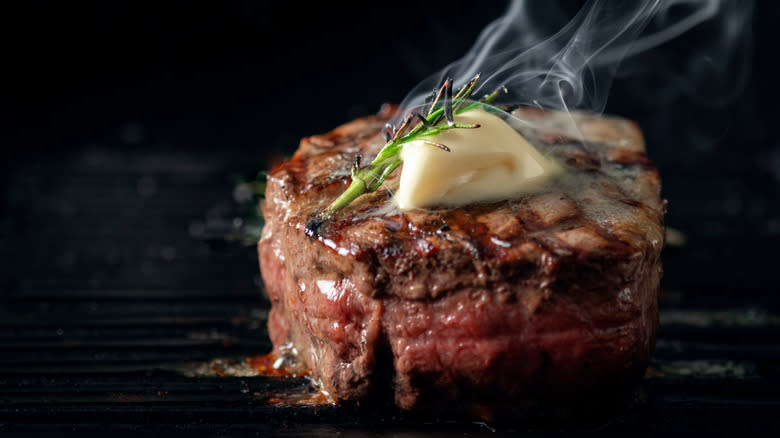
Filet mignon is one of the most expensive cuts of steak that money can buy. Its higher price is due to two things. For starters, each cow only has two tenderloins, which means that filet mignons aren't exactly in abundance. But there's also the fact that its exceptional tenderness puts it in high demand, shooting the price of an already fairly limited item even higher. That said, this is a case where you get a lot of bang for your buck.
At the end of the day, when I'm in the mood to cook up a cut that can contend with some of the best steakhouse dishes, I'm prepared to splurge a little bit. I've made peace with the fact that eating a nice hunk of beef isn't going to be cheap. But when I do treat myself to a great steak, I want it to feel worth it — and filet mignon is just about guaranteed to be divinely delicate and mouthwatering. Flavor-wise, the truth is that ribeyes and strip steaks tend to be richer — but when it comes to texture, it's hard to beat a filet.
Avoid: Flank Steak
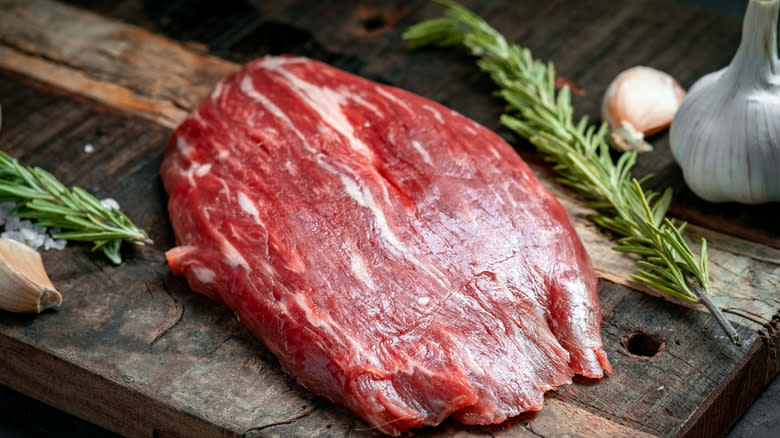
Some may confuse flank steak with skirt steak. After all, both of these cuts are lean, boneless, and have a somewhat rectangular shape. That said, skirt steak has more fat, which makes it more flavorful than flank steak. Skirt steak is longer, while flank steak is shorter and more rounded at the edges. Despite these differences, flank steak and skirt steak still retain a similar level of beefiness and are often used interchangeably in recipes.
Like skirt steak, flank steak will be extremely tough if it's not handled with care. For this reason, lean flank steaks are rarely a cut that I'll go out of my way to stock up on. But if you find a great deal or happen to have some on hand, just make sure to marinate your flank steak and cook it quickly over high heat. Even more so than other cuts, the longer flank steak cooks, the tougher and drier it gets.
Buy: Prime Rib
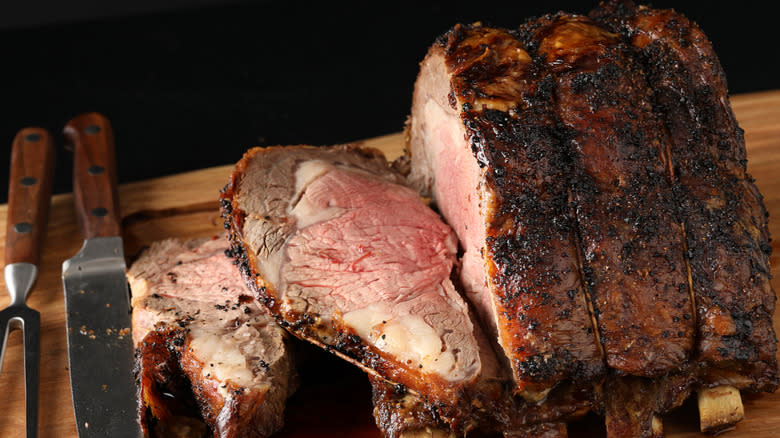
Prime rib — also referred to as a rib roast — isn't really the kind of cut that most of us tend to eat on a regular basis. This is because it's often reserved for special occasions like the holiday season and other celebrations. Prime rib is a slab of beef that comes from the rib section. This area is exceptionally marbled and tender, which makes prime rib one of the richest cuts you can buy.
Prime rib is best simply cooked to showcase its natural flavor. A common approach is to generously rub it down with salt and leave it uncovered in the fridge overnight. Thin slivers of fresh garlic are often inserted into the meat prior to cooking, along with a dusting of some freshly cracked black pepper before it goes in the oven. To achieve medium rare, prime rib should reach an internal temperature of 125 degrees Fahrenheit — though you may want to pull it from the oven a few degrees shy of this, since the beef will continue cooking even after you remove it from the oven. Even though prime rib is pricey and takes a bit longer to cook, it's still highly satisfying in just about every way and totally worth it.
Avoid: Hanger Steak
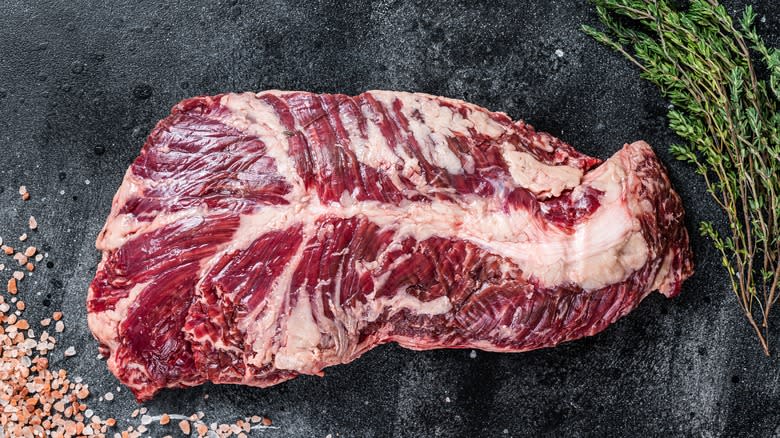
There is only one hanger steak per cow, so this rare cut isn't typically available at most major grocery stores. Instead, it's often found at specialty meat markets and butcher shops. But if you're going to make a special trip to the butcher, there's very little reason to waste your time on a hanger steak when you're probably on the hunt for much better options that are all right at your fingertips.
Hanger steak is similar to skirt steak and flank steak in its flavor and consistency. This cut comes from the belly of the cow, hanging below its diaphragm. There is a tough, thick membrane that runs through the center of the meat. This membrane should be trimmed for optimal results. I usually enjoy beef the most when it's cooked medium because I want the fat to melt into the meat — but if you tend to enjoy steak that's more well-cooked, it's probably a good idea to skip the hanger steak. Like skirt steak and flank steak, hanger is a cut that gets excessively tough and chewy the more that it's cooked.
Read the original article on Daily Meal

